
Owls are efficient nocturnal hunters, so the question may arise: do owls have teeth? We commonly see predatory animals like tigers, lions, hyenas, etc., who tear their prey to pieces with their teeth and eat them effortlessly.
Birds like geese, toucans, greylag geese, etc. have a structure called a tomia in their beak, which may make us think that these are teeth, but they are not teeth.
Owls usually come out at night, which is why we rarely see them. Being nocturnal, they are less visible, so we tend to have superstitions or unrealistic ideas about owls.
In this post, we’ll share with you a clear idea of whether owls have teeth or not and how they cut their food with which your perception of owls may be changed.
Contents
- 1 Do owls have teeth for chewing and grinding their prey?
- 2 How does the owl eat its prey despite not having teeth?
- 3 Do owls have teeth in their stomach?
- 4 What birds have teeth?
- 5 Toucans
- 6 Flamingo
- 7 Geese
- 8 Penguins
- 9 Do owls have egg teeth?
- 10 Do owls have jaws?
- 11 How do owls swallow their prey?
- 12 why do bats have teeth?
- 13 Do snowy owls have teeth?
- 14 Do barn owls have teeth?
- 15 Do burrowing owls have teeth?
- 16 Does an owl bite?
- 17 FAQs
- 18 Conclusion
Do owls have teeth for chewing and grinding their prey?
Owls hold their prey tightly with their sharp talons, and if the prey is large, they tear it into pieces with their beaks, swallowing it whole. Owls do not need teeth to shred their food, which is why they have adapted to being toothless.
Owls have two chambers called the proventriculus and the gizzard to break down the food they swallow. The proventriculus contains digestive fluid that helps digest prey, and the gizzard, which contracts and breaks down the food item with attached muscles,
Owls do not need teeth to chew and grind prey because they have proventriculus and gizzards. The food that they swallow is easily digested in their digestive tracts.
How does the owl eat its prey despite not having teeth?
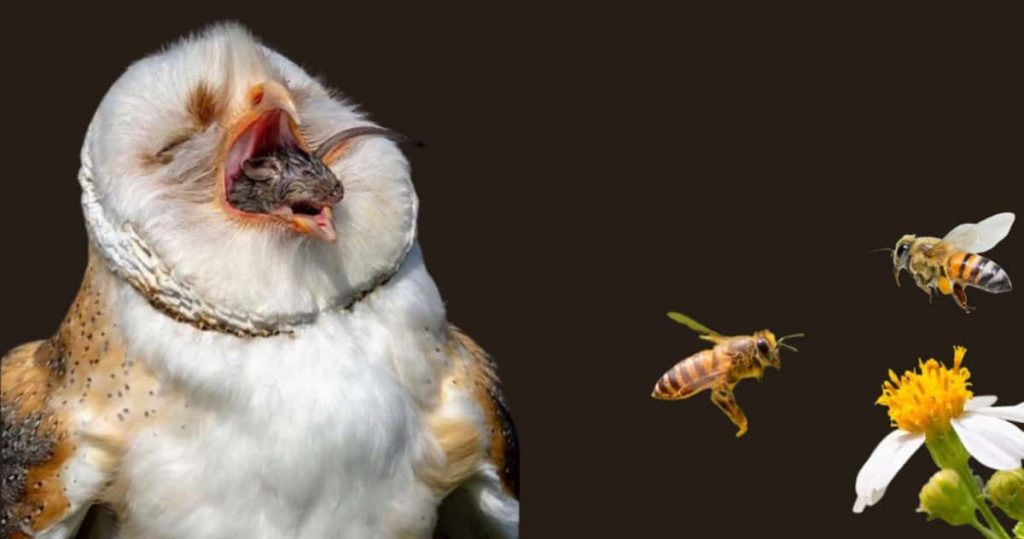
Owls, like eagles, hawks, vultures, and falcons, are birds of prey, but owls do not tear the soft flesh of their prey with their sharp beaks. Owls swallow all their prey because they have a different digestive system than other birds.
When owls swallow prey, the food first enters a proventriculus chamber. In the proventriculus chamber, food mixes with digestive juices to dissolve the food, after which the food enters the next chamber into the gizzard.
In the gizzard, solids that are indigestible to the owl are filtered and stored, and the digestible food material is passed on to the next process.
The indigestible food material stored in the gizzard, such as bones, nails, feathers, hair, teeth, beaks, etc., is expelled through the mouth in pellets called owl pellets.
Since owls swallow their prey, they choose prey that they can easily swallow. Small species of owls select smaller prey, and larger species of owls select prey according to their size.
Many species of owls, when hunting a food item beyond their capacity to swallow, first break the prey into pieces before swallowing the prey. The owl’s toe claws and sharp teeth have an important function in tearing the prey to pieces.
Do owls have teeth in their stomach?
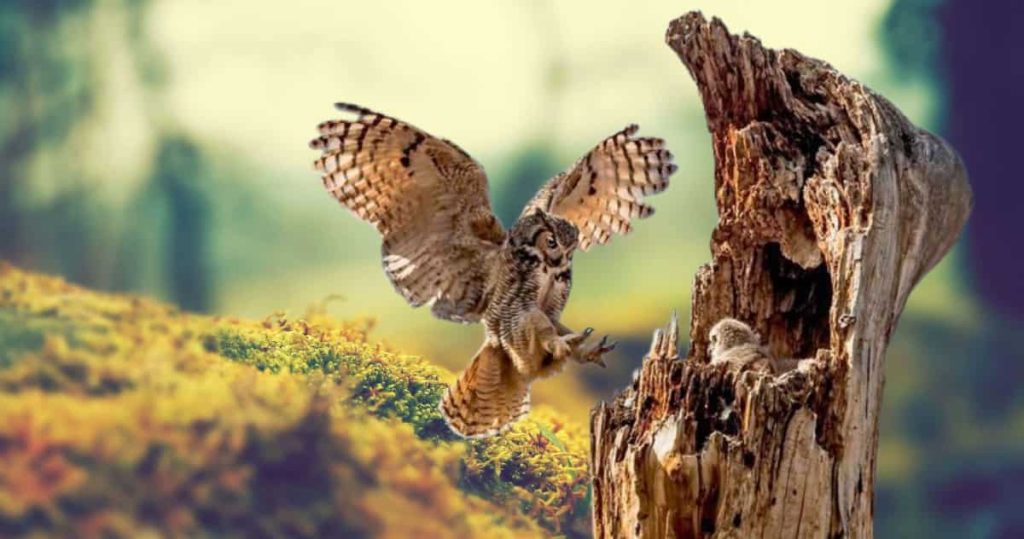
Unlike other birds of prey, owls swallow their prey directly rather than tearing the flesh with their sharp beaks. Owls swallow their prey as owls do not have teeth in their mouths. What many people think is that owls have tooth-like organs in their stomachs.
Owls do not have any organs, like teeth, in their stomachs. Owls have an organ called the gizzard in their stomachs, which is heavily muscled and breaks down the whole prey by contracting and expanding.
Because of this, many people think that owls have teeth in their stomachs, so how do they cut food into pieces?
After the gizzards of owls break down the food, solid food items that owls cannot digest include prey bones, fur, feathers, teeth, etc., which they expel through their mouths in the form of an oval ball. The digestible food material of owls leaves the gizzard for the next stage.
What birds have teeth?
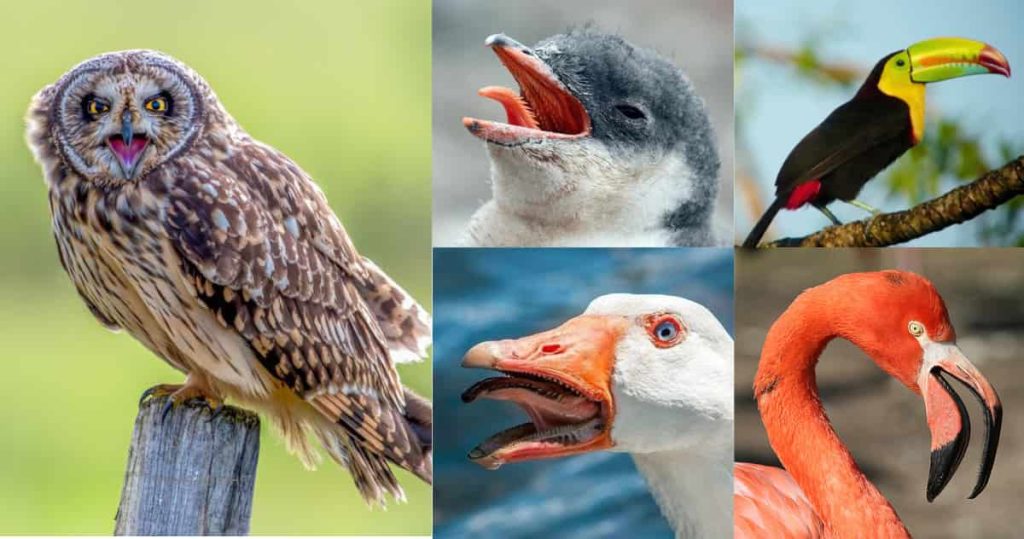
Birds are the animals that evolved from dinosaurs called theropods. Evidence that birds evolved from dinosaurs comes from a fossil about 150 million years old. The birds which were found in these fossils resemble small, feathered dinosaurs.
These birds evolved from theropods belonging to the Tyrannosaurus rex group of dinosaurs, rather than from the T. rex giant species of dinosaur. At that time, birds had teeth, but over time, evolution gradually evolved their teeth into hard beaks.
Some of the birds are mentioned below. These are the birds whose beaks you might think have teeth.
Toucans
The toucan is a bird that looks attractive with a large beak, and its beak makes up one-third of its total body area. Their beaks are composed of relatively soft bones covered with keratin, a substance similar to human nails.
Although toucans have large beaks, they nest in tree trunks created by other animals. There are about 40 species of them in the world, some of which live well alone or in groups.
The structure of their beak is joined in such a way that light grooves are added, which can be seen as teeth. It helps to grip the food better and break down the fruit.
Flamingo
A Flamingo is a light pink bird having an attractive look with long and slender legs. These species of birds tend to flock together, and their group dancing in the water is very attractive.
There are six species of flamingos found around the world that can be found roaming in several lakes in the Americas, Africa, Madagascar, and India.
Flamingo beaks have comb-like indentations that may appear to be teeth. These tooth-like parts, called lamellae, help flamingos sift food out of the water.
Flamingos have large, curved beaks that are mainly adapted for selecting food items from water. Small invertebrates, including algae, diatoms, and other small food particles, are easily trapped in the lamellae of water.
Geese
Geese are birds that weigh heavily, and geese of several species are found all over the world. They usually live in freshwater when they encounter a predator or make loud calls to call a mate.
Their beaks are unusually thick and strong, with notches similar to those of their teeth, which are often mistaken for teeth.
With their beaks, they tear off terrestrial grasses, seeds, and aquatic plants easily. Their strong beaks are shaped perfect for crushing food.
When a predator attacks them, they try to repel the attack with their beaks or lunge at the predator with their beaks open.
Penguins
Penguins are better known to us because of their attractive faces and their varied physical characteristics. When they walk on their two legs, it looks like a man walking.
About 18 species of small and large penguins can be seen in the world. Almost all penguins around the world are found in the southern hemisphere. Penguins’ bodies are adapted to survive in cold areas; they cannot tolerate hot weather at all.
Penguins are birds, so they have no teeth. Their mouths have comb-like fleshy spines called papillae. These papillae serve to help them carry the fish down their throats when they are hunting for food.
Do owls have egg teeth?
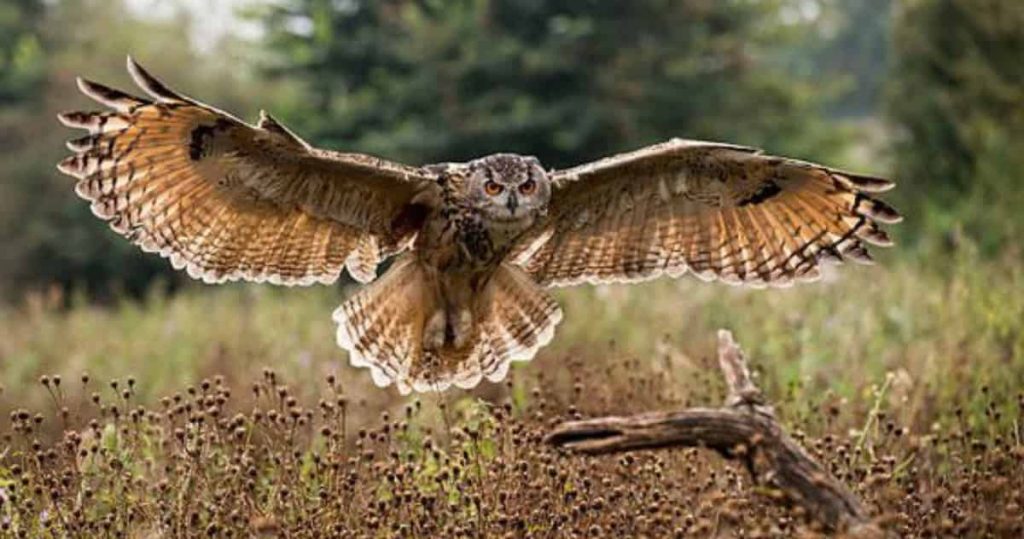
Yes, owls have a tooth in their eggs, which is the keratinized, sharp covering on the top of their beaks, the front of the beak.
To adapt to their environment, the tooth of baby owls is shaped through evolution. If the tooth is not present, the baby owls will die in the embryo while still in the egg.
The embryos of owls, when it is time for hatching, use this tooth to help them break open the egg. Before owls hatch, their beaks are relatively soft. If baby owls strike with their beaks to hatch, the owl’s beak may be broken or injured.
This tooth of the owl egg is solid because it is keratinized. This tooth of a baby owl is lost as it grows up because it no longer has any function.
Do owls have jaws?
Yes, owls have jaws that are divided into two parts: an upper jaw and a lower jaw. Owls don’t have teeth in their jaws like we do; instead, they have beaks.
Owl jaws hold both the top and bottom of the owl’s sharp beak firmly. During hunting, the muscles of owls in the jaws function importantly in killing the prey, as they make the beak fit for a powerful bite.
Owls have jaws more flexible than other birds of prey, which allows them to swallow their prey. In addition, when they eject pellets through their mouths, these jaws keep the mouths apart.
How do owls swallow their prey?
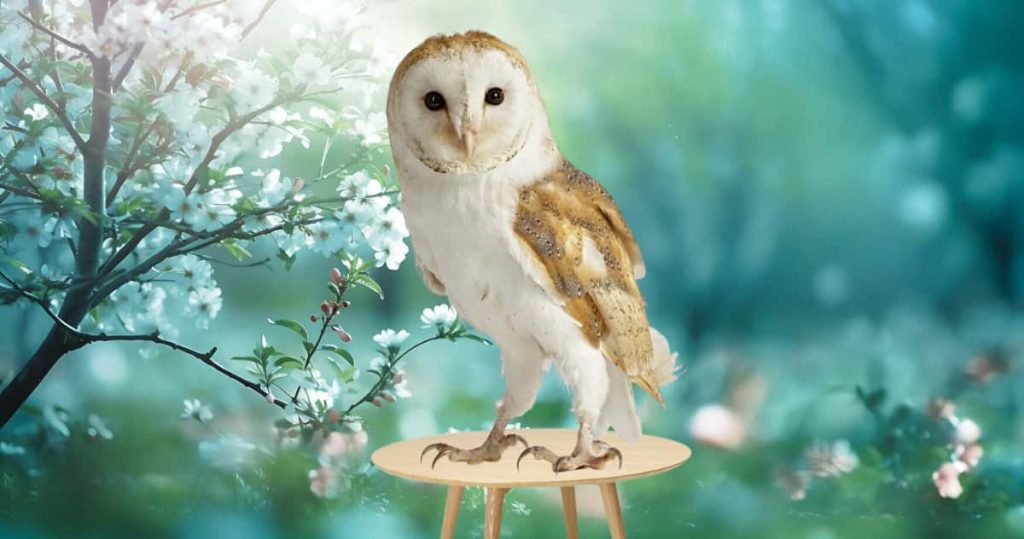
Like eagles, hawks, and other birds of prey, owls swallow their prey instead of tearing it apart with their beaks.
If the prey is small in size, the owls can swallow the prey directly, and if the prey is shaped relatively large, the owls tear the prey into several pieces and then swallow each piece wholly.
Owls kill prey by grasping it by the legs with their talons and sharp beaks and swallowing it. Owls select the prey’s head first and slowly swallow the prey whole from the head.
Owls’ tongues serve in swallowing prey. Owls have saliva on their tongues that lubricates prey and papillae, which are like small bumps, to hold prey. In short, with the saliva and papillae of the owl’s tongue, they hold the prey in the cheek and swallow the prey.
why do bats have teeth?
Many people think that bats are birds because they have wings to fly. Bats are mammals whose young are raised on their mother’s milk. Like mammals, Bats are also covered with fur on their bodies,
Bats, like other mammals, have very sharp teeth. The structure of the teeth of bats is such that it is natural to fear anyone.
Their dental structure, like mammals, is heterodont, which means that they have different types of teeth that serve to help them bite, tear, and grind their food.
There are many species of bats in the world whose diet differs from species to species. While insectivorous bats may have 38 teeth, vampire bats have 20 teeth.
Do snowy owls have teeth?

The snowy owl is considered the largest white owl in the world. The average weight of owls is 4 to 5 pounds, but this species of owl can weigh up to 6 pounds. The physical beauty of these owls looks attractive to everyone. They live in snowy regions, and their bodies are adapted to easily blend into the nature of that region.
The popularity of this species of owl among people takes us back to primitive times. Their drawings are found among other animals depicted in Paleolithic caves in France.
Snowy owls are adapted to survive in adverse conditions. They can easily understand the movement of the prey in the snow and hunt perfectly. However, although they have strong beaks, they have no teeth.
Do barn owls have teeth?
The barn owl is specified as one of the most common species in the world. People are more familiar with their love symbol faces. Many people call them monkey-faced owls because of the shape of their faces.
Owls’ eyes are usually larger than their bodies, but barn owls have smaller and darker eyes than other owls. They are also known to many because of their hissing sound.
Barn owls have taken a place in human folklore, mythology, and superstition since ancient times. In many places, the owl is believed to be the messenger of death, and in many places, people worship it as a goddess.
Barn owls also have no teeth and use their sharp beaks to kill prey and swallow the prey whole. Their digestive system is adapted to digest the food they swallow, so they don’t need teeth.
Do burrowing owls have teeth?
The burrowing owl is counted as one of the world’s smallest owl species, noted for nesting on the ground. These species of owls find shelter in abandoned nests made by other animals, such as burrows in the ground.
While other species of owls are not usually found in flocks, these owls can be found in small flocks, which helps them avoid other predators. They live in pairs during the breeding season and may live separately at other times.
While most owls are found to be more active in low light, i.e., dusk and dawn, this species of owl acts more actively in daylight, which distinguishes this species of owl from other species.
Large insects, including fish, rodents, small birds, reptiles, etc. make the favorite food of this species of owl. Like other owl species, they have no teeth.
Does an owl bite?
Owls are very aware of their territory and become aggressive when they see a predator entering their territory that could harm their babies or prey on their food from their territory.
However, owls’ attacks on humans are very rare. They usually attack us from above our heads, which leaves no way to know in advance.
Being a bird of prey, owls are more likely to injure humans if they attack. Owls have powerful leg talons and sharp beaks that are enough to tear through human skin.
Owls are typically more active during mass and dusk, so if an owl attack is possible in a location, it should be avoided during these two times.
FAQs
Q. Do owls have sharp teeth?
Ans: Owls are avians, so like other birds, owls do not have teeth but have sharp beaks.
Q. How many teeth do owls have?
Ans: Owls have no teeth, but when the baby owls are in the egg, they have a keratinized hard part on the beak to break the egg out, called the owl’s egg tooth.
Q. Why do owls not chew?
Ans: As no bird has teeth, owls also have no teeth. That’s the reason why owls can not chew their prey.
Q. Do owls have big mouths?
Ans: Owls do have mouths large enough to swallow their prey.
Q. Do owls have a nose or beak?
Ans: Owls have noses connecting two holes at the base of their beaks.
Conclusion
People’s curiosity about owls as mysterious birds is immense, which arouses many questions about owls. One of them is: Do owls have teeth?
The question of owl’s teeth arises in our mind as owls are nocturnal; on the other hand, bats are also nocturnal, and bats have sharp teeth.
We forget that even though bats have wings, they are mammals, so they have teeth, on the other hand, even though birds had teeth during the dinosaur age, it was an evolution. No bird currently has teeth, so since owls are birds, they have no teeth.